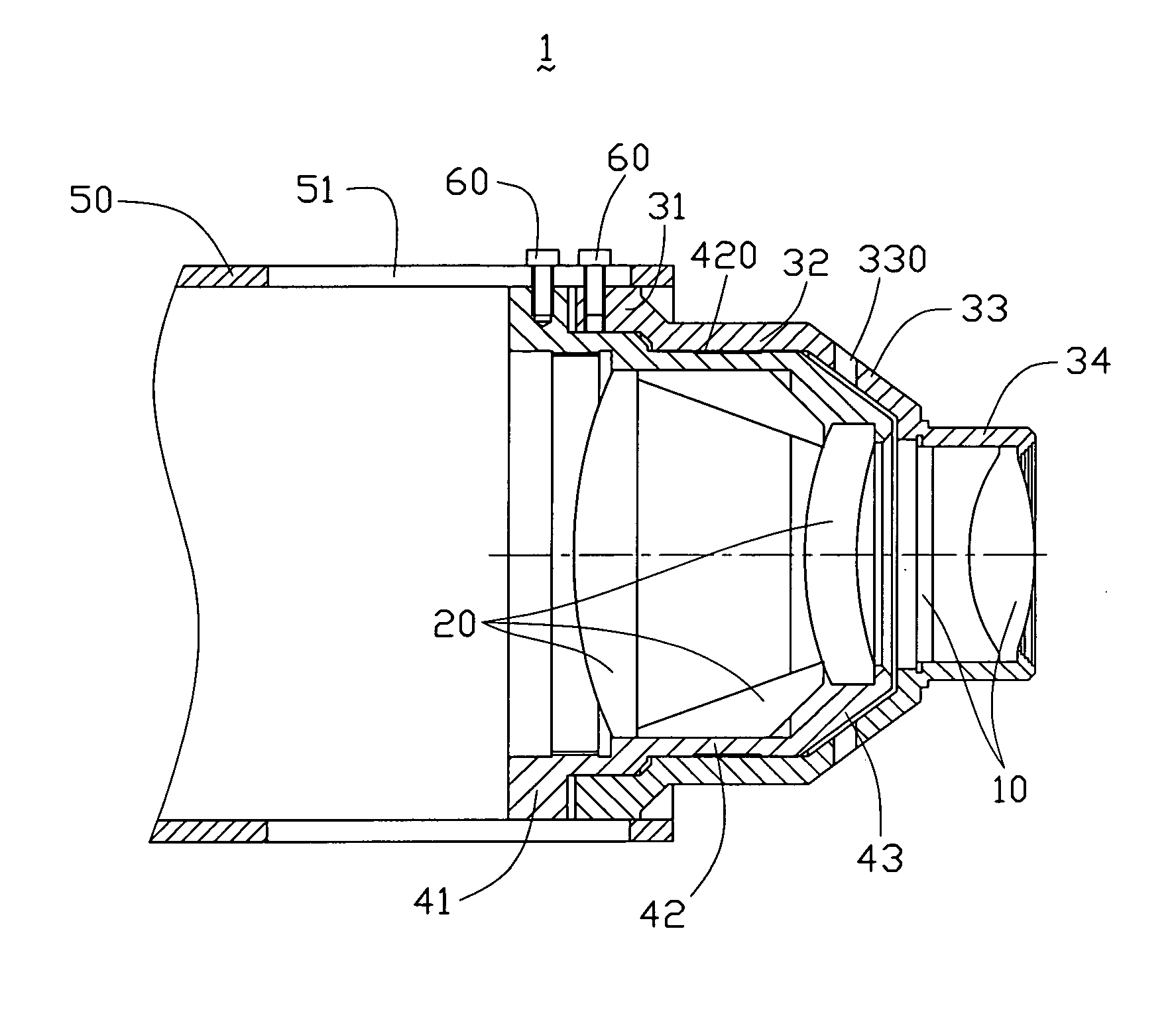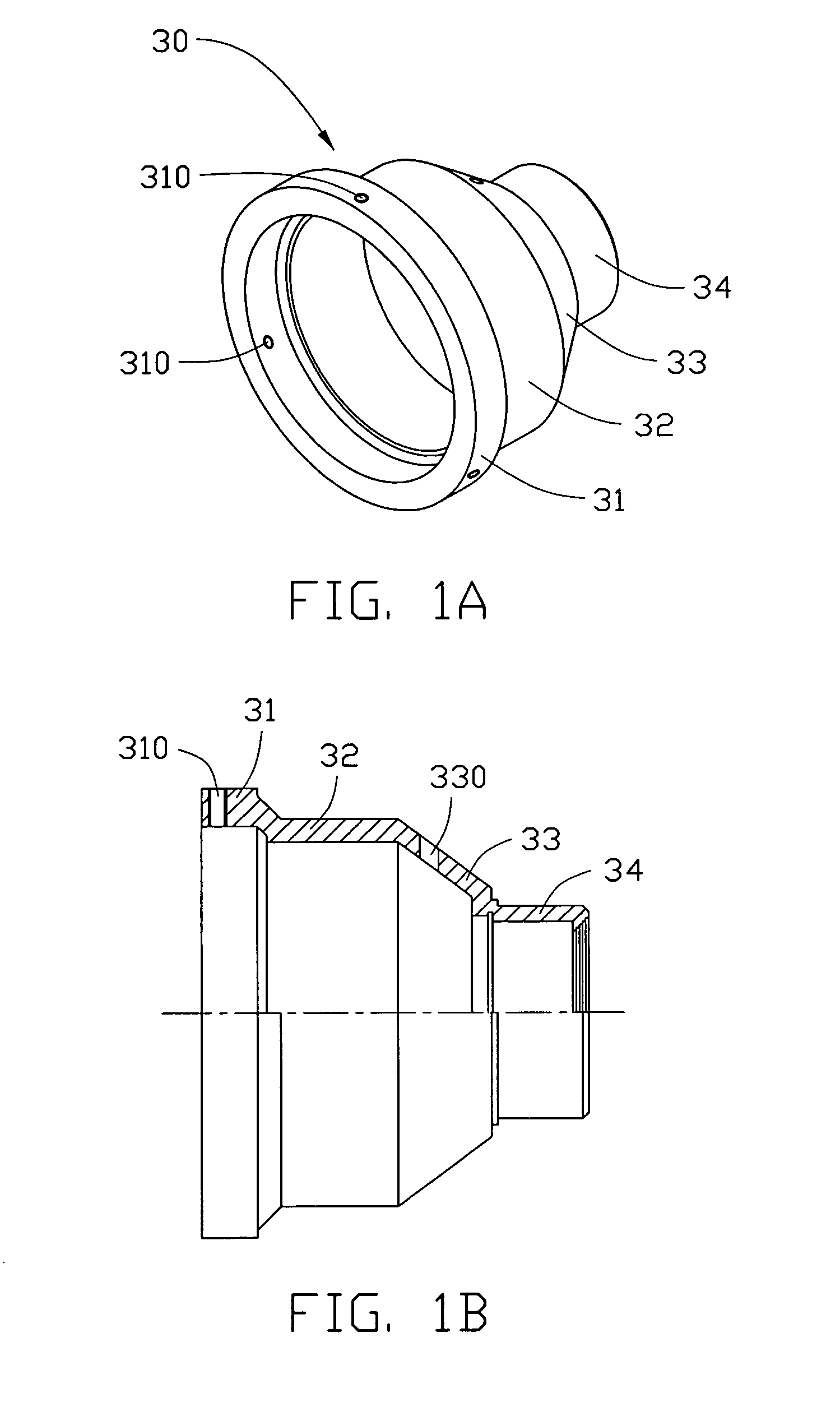Zoom lens assembly
a technology for zoom lenses and lens sets, applied in the field of zoom lens assemblies, can solve the problems of difficult to guarantee the optical performance of the zoom lens assembly, performance degradation, and inability to completely ensure the structure, so as to reduce sliding friction, facilitate the sliding of the lens, and provide the compact sliding surface
- Summary
- Abstract
- Description
- Claims
- Application Information
AI Technical Summary
Benefits of technology
Problems solved by technology
Method used
Image
Examples
Embodiment Construction
[0023] The present invention will now be described more specifically with reference to the following embodiments. It is to be noted that the following description of the preferred embodiments of the present invention are presented herein for purpose of illustration and description only and it is not intended to be exhaustive or to be limited to the precise form disclosed.
[0024] With reference to FIG. 1A to FIG. 4, a zoom lens assembly 1 according to a preferred embodiment of the present invention is disclosed. The zoom lens assembly 1 comprises a plurality of optical lenses divided into a first and second lens groups 10, 20, and a first and second internal barrels 30, 40. Meanwhile, the first lens group 10 (as a front lens group) is mounted in the first internal barrel 30 to form a first lens set and the rear lens group 20 (as a rear lens group) is mounted in the second internal barrel 40 to form a second lens set. After the two lens sets are assembled, the second internal barrel 4...
PUM
 Login to View More
Login to View More Abstract
Description
Claims
Application Information
 Login to View More
Login to View More - R&D
- Intellectual Property
- Life Sciences
- Materials
- Tech Scout
- Unparalleled Data Quality
- Higher Quality Content
- 60% Fewer Hallucinations
Browse by: Latest US Patents, China's latest patents, Technical Efficacy Thesaurus, Application Domain, Technology Topic, Popular Technical Reports.
© 2025 PatSnap. All rights reserved.Legal|Privacy policy|Modern Slavery Act Transparency Statement|Sitemap|About US| Contact US: help@patsnap.com



